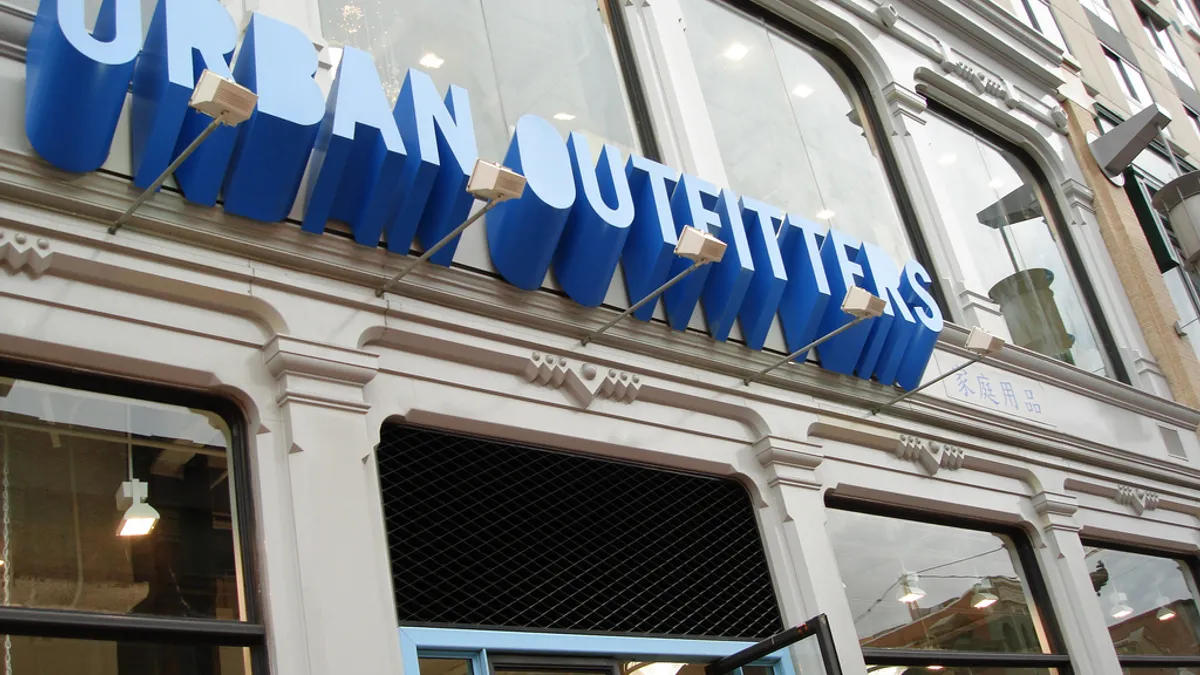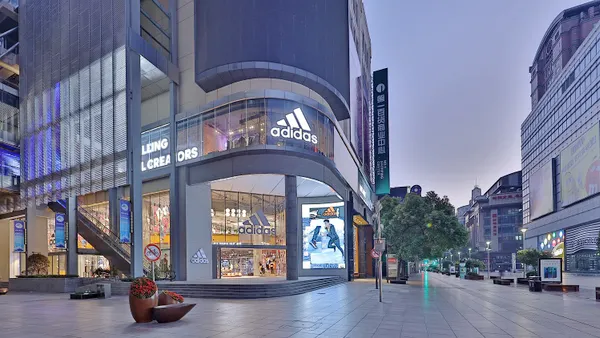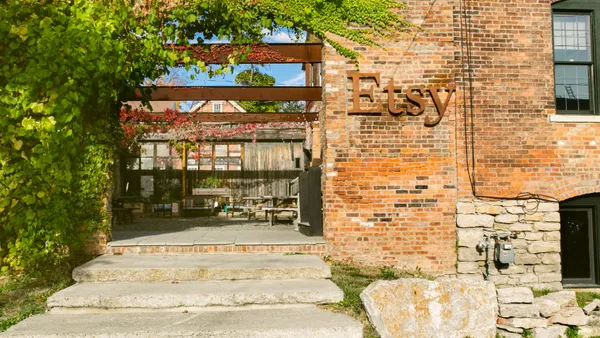Dive Brief:
-
Shares of Urban Outfitters, which runs apparel and home goods brands Anthropologie, Bhldn, Free People, Terrain and Urban Outfitters as well as a food and beverage division, fell more than 10% in late trading Thursday after the retail company acknowledged in a quarterly Securities and Exchange filing, “thus far during the second quarter of fiscal 2018, comparable retail segment net sales are high single-digit negative.”
-
The company also noted that the decline so far in the quarter and in its first quarter same-store sales (which in the first quarter across its retail segment fell 3.1%), has been partially offset by the opening of 39 new stores and restaurants and by its e-commerce sales.
-
Urban Outfitters last month outlined a four-point plan to battle the declines, including fostering its e-commerce sales, turning more to customers outside North America (in particular in Europe and the Middle East), ramping up its wholesale play and boosting offerings in better-performing sub-segments, like Free People’s Movement yoga wear and home goods.
Dive Insight:
Urban Outfitters' stores, which do offer compelling shopping experiences, are suffering, which CEO/founder Richard Hayne last month pinned on the tough apparel environment.
“[T]he URBN brands are powerful and still possess significant untapped opportunities for growth,” Hayne insisted on a call with analysts, according to a transcript from Seeking Alpha. “The four areas of opportunities I just discussed, if properly implemented, could add many hundreds of millions, if not billions of dollars to our top line. This at a time when many North American retailers are desperately searching for growth vehicles because the traditional method opening more stores is no longer viable.”
There’s no doubt that the apparel sector is “soft,” according to GlobalData Retail analyst Håkon Helgesen, but some of the weak performance comes from the company’s own shortcomings.
“Foremost among these is the continued shift to online,” Helgesen said in a note emailed to Retail Dive. “Urban continued to see double-digit growth in its direct to consumer channel. However, this came squarely at the expense of stores, which shoppers are visiting less often and from which they are buying less. A particular issue here is that it costs Urban more to fulfill from its online operation than it does from a store, so the direct channel's cannibalization of sales is costing the company margin and hurting profits.”
While the company’s stores are nicely presented as curated destinations, shopping in them is often confusing, and the merchandise of late has been off the mark, he said. “The customer has to do a lot of work in finding the right product, which is one of the reasons increasing numbers are opting to buy online where sorting and filtering options make it easier to identify items of interest,” Helgesen said. “In our opinion, the clothing offer is too eclectic. Unfortunately, over the past few months, this seems to have become worse rather than better with some jarring and off-pitch styles creeping into the mix.”
Considering the level of work to be done, GlobalData Retail analysts expect the rest of the year to “remain soft,” especially at the company’s flagship Urban Outfitters brand.













